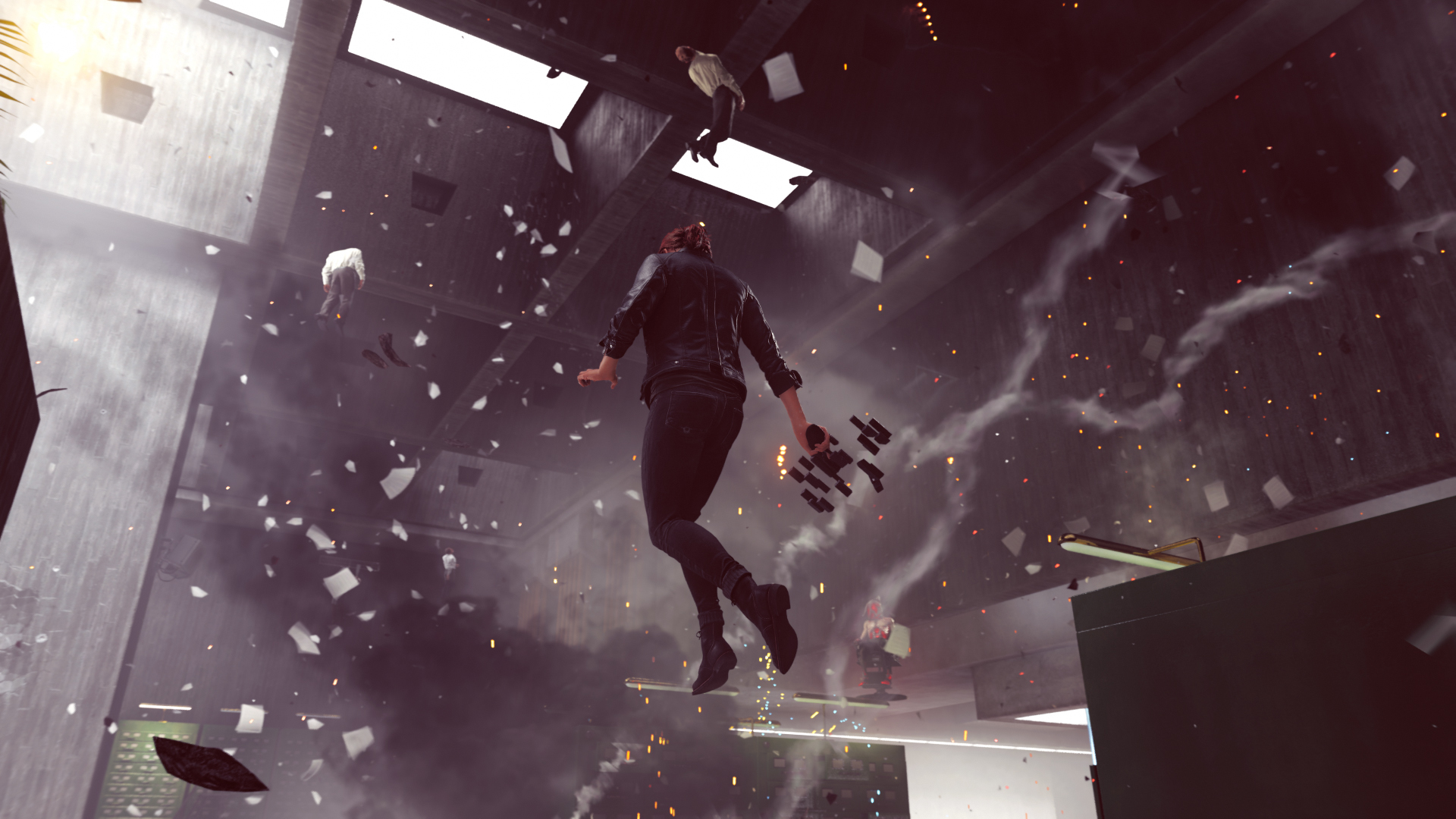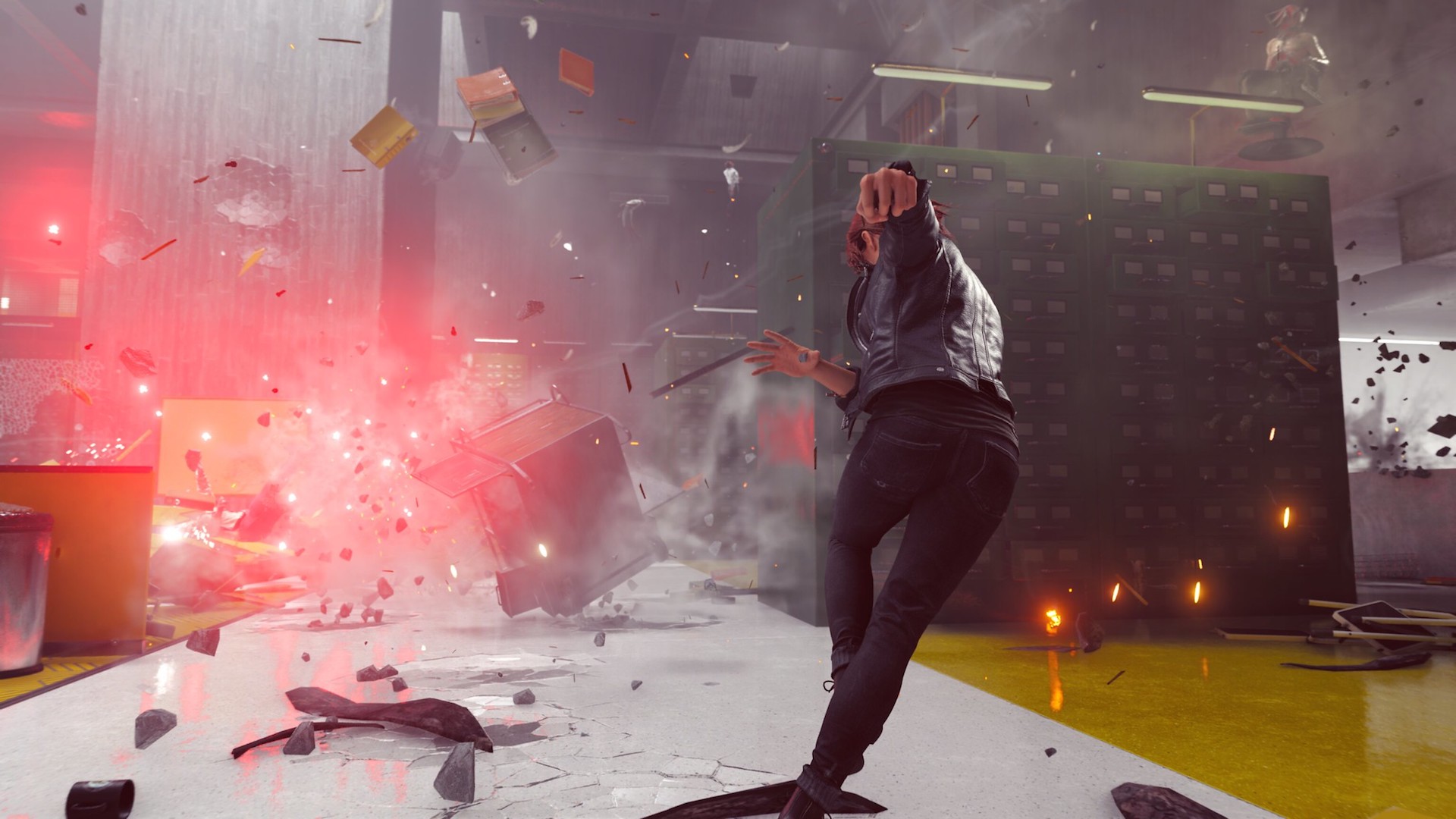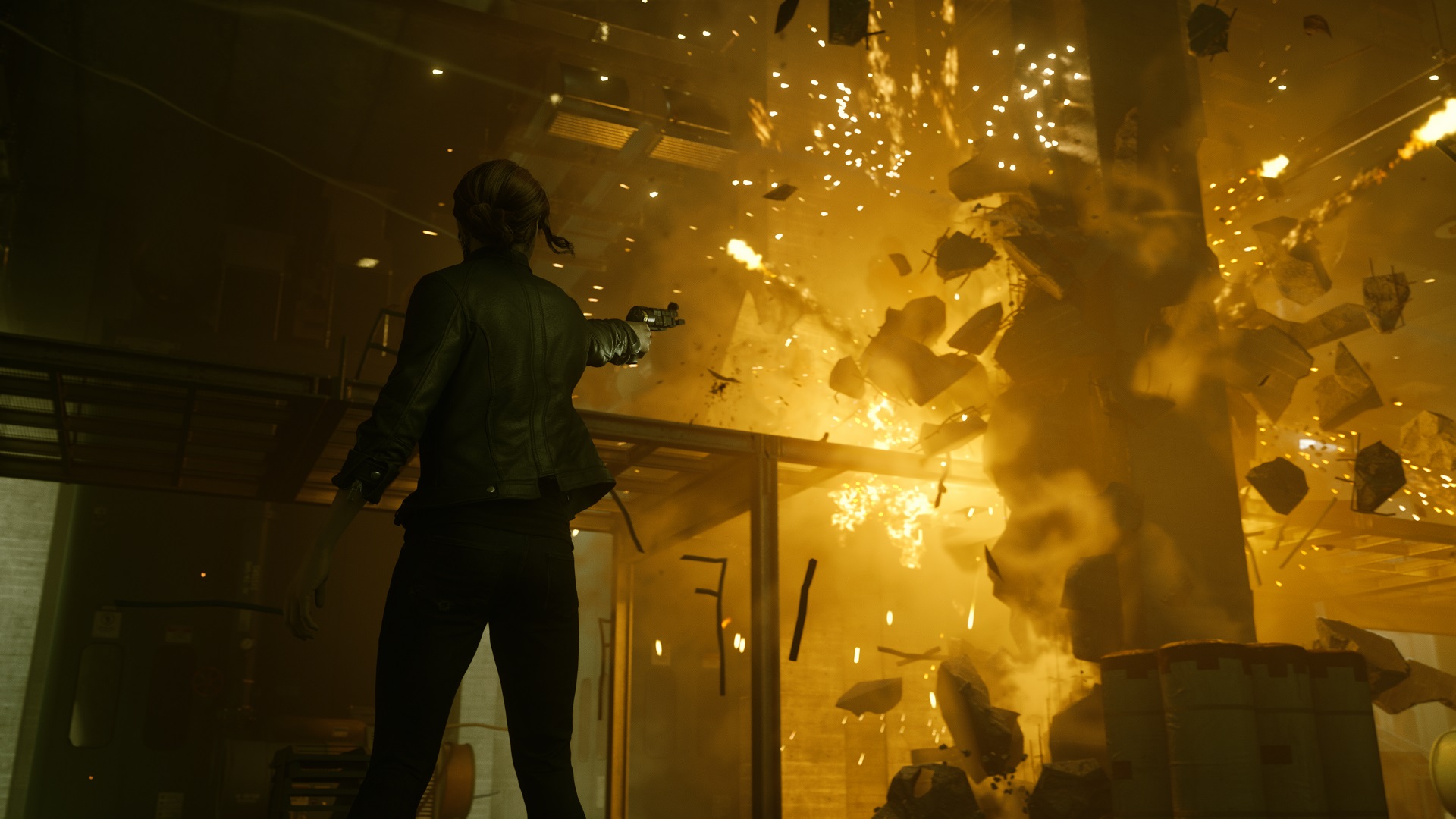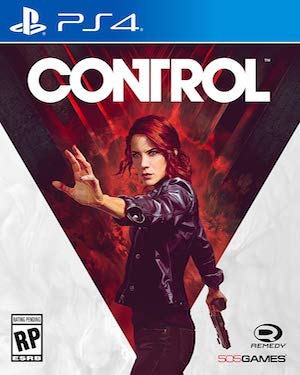
They say third time’s the charm and with Control, Finnish developer Remedy seems to have struck gold in the graphics department. Remedy’s been a console-focused developer in the past. 2010’s Alan Wake redefined graphics expectations for the Xbox 360, with its spectacular volumetric lighting system. This lent the whole Twin Peaks-esque affair that extra touch of authenticity.
In 2015, Remedy pushed things even further out with Quantum Break. With this game, Remedy introduced its Northlight engine and a stunning dynamic global illumination system, offering best-in-class lighting. The game came only months after the whole “resolution-gate” scandal about Xbox One’s inferior hardware specs cooled down. It was something of a relief for Xbox an PC gamers to have a title that could go toe-to-toe with the likes of Uncharted 4 in the graphics department. Quantum Break didn’t fare that well in sales, though. We expect that this stung a bit, especially considering all the money that must have been lavished on the game’s extensive FMV sequences.
But now, four years later, Remedy’s returned with another title built on Northlight: Control. Control pushes graphical boundaries, just like Remedy’s earlier titles. But this time, it’s all about creating a spectacular PC gaming experience. Nvidia RTX has been out for nearly a year now and, apart from Metro Exodus and Battlefield V, there haven’t been many “real” ray-tracing experiences. There’s been no real reason to buy into RTX’s key selling point. But Control was built by Remedy in close partnership with Nvidia and the result is game that’s the literal poster boy for that old adage “PC gaming always looks better.” PC games at high-end settings do, indeed, look better than console releases. But these days it’s almost always been subtle refinements: A resolution boost here, slightly higher polygon counts there. The introduction of RTX ray tracing radically alters the PC version of Control for the better. This is a game with a literal night-and-day difference between the PC and console versions and much of that is down to ray-tracing. But just what makes Control tick? Let’s find out.
PC vs PS4 Pro vs Xbox One X Performance
Before we proceed ahead a note. On the console front, we analyzed the game’s performance by taking some sample scenes from the game and running it through trdrop, an open source software. Note that this tool gives us a mere demonstration of the game’s performance, because an exact 1:1 representation of performance can only be provided by the developers themselves since they have access to vast of array of tools and profilers.
Both the mid-cycle refresh consoles hand in a surprisingly refined presentation in Control. The tradeoffs versus the high-end PC experience are glaring–especially the lack of ray-tracing. But as a console title in its own right, the experience is great. On Xbox One X, we are likely seeing a native 4K presentation that maintains a 30 FPS locked performance. The PS4 Pro version of the game had a noticeably softer presentation—likely running around 1440p. Once again, just like the Xbox One X version there were no performance drops.
On the PC front, the game includes the likes of Far Object Detail, Texture Resolution, Texture Filtering, Shadow Resolution, Shadow Filtering, Volumetric Lighting, SSAO, Global Reflections, MSAA, Film Grain and several options for Ray Tracing. We tested the game on a PC that includes a GTX 1080Ti, 16GB of GDDR4 memory and Ryzen 1700 CPU. Overall, performance was minimum 60fps in DX11 mode with every maxed out. However, in DX12 mode, we faced severe performance issues. At this point, DX11 was the only way we can play the game in a stable manner.
Let’s also talk about the visual differences between the console versions and PC. Of course there’s no ray-tracing, but apart from this, visual changes relative to the PC version are fairly subtle. LODs are a bit more aggressive, so there’s more pop-in, and SSR’s a bit less accurate, as is volumetric lighting. Overall, though, it’s a fairly close match for PC version’s high preset (with a 30 FPS cap in place, of course).
Engine Summary
As we mentioned earlier, Control is built on the Northlight engine. This is a proprietary engine Remedy debuted with Quantum Break. However, both Alan Wake and the first two Max Payne games (Remedy’s entry into AAA) were based on in-house tech. In that light, Northlight, as introduced in Quantum Break, can be seen as a logical next step after Alan Wake, to make use of eighth-gen hardware advances.
Many of Northlight’s key features can be traced back to these earlier games. Remedy was among the earliest developers to incorporate ragdoll physics when they incorporated Havok in Max Payne 2 back in 2003. This elevated the game’s slow motion bullet-time shootouts and allowed for a degree of realism rarely seen on platforms like the Playstation 2.
Physics interactions have played a prominent role in Remedy’s later titles, too. Quantum Break in particular made great use of environmental micro-destruction. Wood chipped away and pieces of paper and other debris flew during combat. In Control, we see even more of this. Previous Remedy games made use of the tried and tested Havok middleware for ragdoll physics. With Control, though, Remedy’s opted to use a different physics middleware. They’ve been tightlipped about exactly what they’re using. Considering the Nvidia-centric nature of the title (it’s practically RTX’s first major showcase barring Exodus), we’d have assumed it was PhysX. But apparently that’s not the case, either. Regardless, from a moment-to-moment basis, Control offers evolution, not revolution, in comparison to Quantum Break. You get the same kind of environmental micro-destruction, with miscellaneous objects flying this way and that when faced with your powers. The RTX ray-traced reflections add a greater degree of oomph, though: whatever you do onscreen is mirrored on all the glossy surfaces too.
With the arrival of Alan Wake, we see Remedy’s emphasis on dynamic lighting. The Alan Wake engine was one of the earlier console titles to make use of deferred rendering. Deferred rendering allows for large numbers of light sources onscreen at a time, with less of a performance hit. This was crucial to Alan Wake’s light-and-shadow aesthetic.
With the introduction of Northlight and Quantum Break, Remedy doubled down on their lighting tech. Northlight brought in a dynamic global illumination rendering for lighting. Static GI has become increasingly common and was demonstrated to excellent effect in the latter Assassin’s Creed titles. However, dynamic GI is substantially more intensive from a computational perspective. Together with the excellent physically-based material renderer, this allowed Quantum Break to have a CGI-esque visual quality. The lighting wasn’t the only reason for this, though. Checkerboard rendering and temporal reconstruction are much more frequent these days because the mid-cycle refresh consoles need these techniques to output some approximation of 4K. Implementing dynamic GI on the Xbox One (a console with a GPU roughly equal to this year’s iPad), required similar finessing.
Motion capture was another area. While the first Max Payne games relied on comic-strip cutouts to narrate the story, motion capture featured prominently in Alan Wake and resulted in a fairly convincing cutscene presentation. With Northlight in Quantum Break, this was really taken to the next level. Remedy’s target here was simple: allow for a seamless transition between FMV sequences and in-engine cutscenes. Advanced DI4D motion captured technology allowed for Aiden Gillen and the like to deliver stunning performances, whether in an FMV sequence or in-engine. DI4D comes back in Control and the results speak for themselves. Control has FMV sequences too, but they’re not as frequent as Quantum Break and, crucially they’re not as jarring. FMV video is often displayed on in-game screens. The quality of the engine visuals are good enough that the gap isn’t that huge.
Material rendering is par excellence. This is clearly an area where Control is building on Quantum Break’s strength. The physically based material renderer introduced in that game imbued its otherwise sterile, urban environments with an added degree of groundedness. Materials like glass, wood, and metal just looked right, especially with the dynamic global illumination factored in. With Control, physically based rendering adds just as much. Most environments are made up the same kinds of materials: glass and glossy metal. Material rendering in Control accurately captures these surfaces but it’s RTX that really takes things to the next level.
RTX Features
RTX has been seen as something of a gimmick ever since Nvidia introduced it with the Turing cards last year. And to be honest, this is what it seemed like. Apart from Metro Exodus, where the ray-traced global illumination completely transformed the game’s visuals, other RTX implementations in Battlefield V and Shadow of the Tomb Raider seemed tacked on, obligatory. Control is the first game since Metro Exodus where RTX has a truly transformative effect on the visuals. And unlike Metro Exodus, Control doesn’t use RTX to replace just a single rendering function (global illumination). Instead, it features the most robust RTX implementation we’ve seen in a game til date. Control has nearly as many distinct ray tracing options as it does regular graphics options. Considering some titles have nothing more than an “RTX” toggle or preset, this says a lot.
Control’s most visible RTX feature is ray-traced reflections. There are multiple types in use here. Standard ray-traced reflections are one option. Enabling this replaces the game’s screen-space reflections with real-time, ray-traced reflections. These are not only of a much higher quality–they also factor in objects that our outside the screenspace–behind the camera, for instance. Ray-traced translucent reflections make an appearance in Control, too. This is the first time that this technique has been used in a game. It’d be easier to explain this by using a real-world analogy. Think of a translucent glass surface–a sliding door at a supermarket for example. It lets light in from both sides and also reflects objects on both sides. Ray-traced translucent reflections simulate this phenomenon.
Shadows also benefit immensely from RTX in Control. The Ray-traced Contact Shadows option is an evolution of HFTS (Hybrid Frustum Traced Shadows). This was a technique that utilized path-tracing to create contact shadows and first implemented in The Division. The RTX evolution of the technique does much the same: it provides extremely high-quality, accurate, and aliasing-free shadowing. You get RTX diffuse lighting as well. This is a subtle effect and mainly serves to enhance the in-game ambient occlusion.
There’s a lot of ray-tracing going on here. While the effects are pretty, our test bench with a 1080 Ti and Ryzen 1700 just can’t handle it. With RTX disabled, we had no issues hitting 4K/60 FPS in this game. From that perspective, it’s surprisingly optimized: Quantum Break doesn’t perform anywhere near as good.
If you own a Turing card, DLSS is pretty much a must if you want playable framerates with RTX turned on.
Conclusion
Remedy’s finally done it. While both Quantum Break and Alan Wake were considered good-but-not-great, Control is Remedy at their finest: a gripping, inventive narrative, paired with top-notch performance capture, and stunning visuals. Despite not benefiting from RTX features, we were pleasantly surprised by how well Control ran and how great it looked on a system with a 1080 Ti. The console versions did credit to themselves, too: nips and tucks in all the right places mean that neither PS4 Pro nor Xbox One X owners will be disappointed.




















